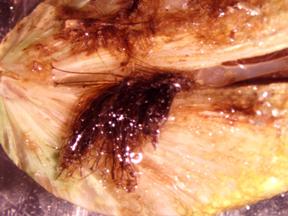Habitat
The Zebra mussel can be found in several major river systems in
southeastern Canada and the Eastern and Midwestern portions of
the United States since their successful invasion of the Great
Lakes from Eur ope in the mid to late 1980s.
ope in the mid to late 1980s.
Zebra Mussels were first discovered in Lake St. Clair in 1988. Lake St. Clair is located east of Detroit, Michigan between Lake Huron and Lake Erie. However, this species has the potential to inhabit most of the fresh waters of the U.S.
Zebra Mussels can be found in lentic and lotic habitats where they are primarily attached to hard substrates such as rocks, industrial plant intake structures, and even other species.

Zebra Mussels attach to these surfaces by using byssal threads. Byssal threads are very strong and can withstand high flow rates. Also can be used in adaptation. A single Zebra Mussel can have up to 200 byssal threads. These are formed one by one at the site of attachment. The byssus (plural form of byssal threads), flat ventral surface, and taperlike tentlike dorsal surface allow a Zebra Mussel to be positioned tightly against the surface. All of these factors make it difficult for predators or high currents to pry the mussel off the surface.
